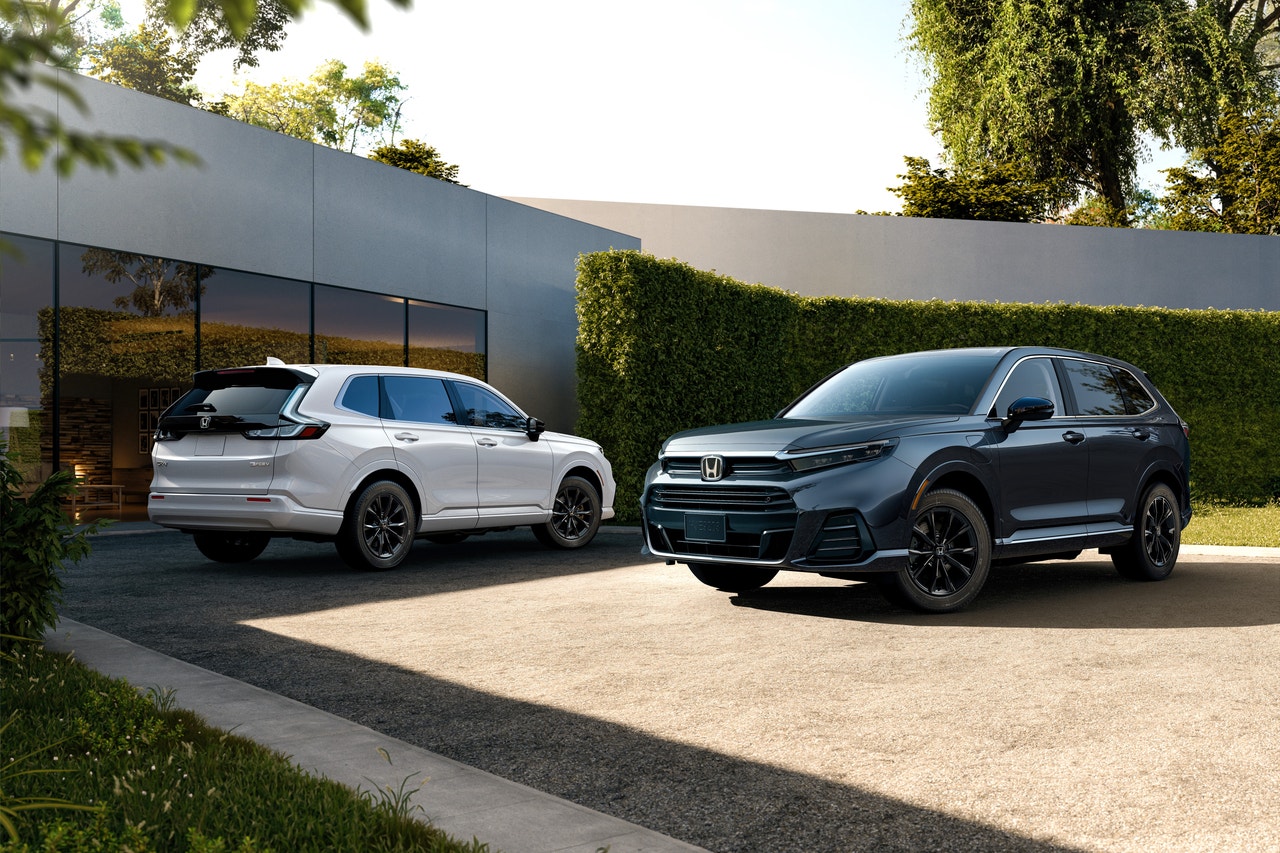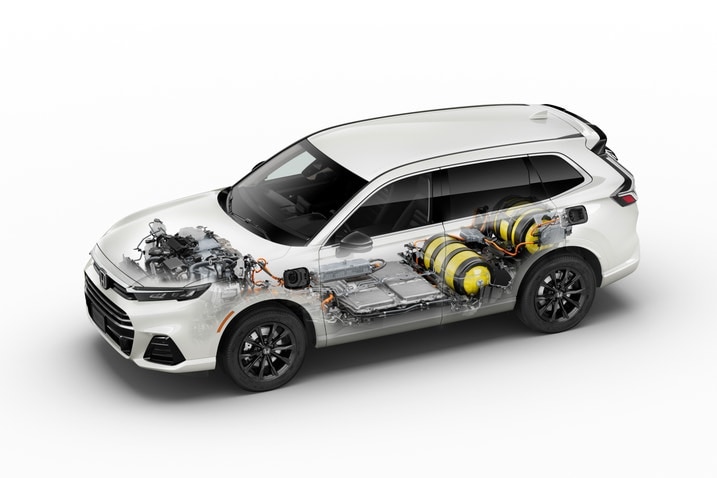- The 2025 Honda CR-V e:FCEV is powered by a plug-in hybrid hydrogen powertrain.
- Honda touts 270 miles of range for the new SUV.
- The CR-V e:FCEV will be available to lease in California later this year.
2025 Honda CR-V e:FCEV First Look: Unique Plug-In Hydrogen Powertrain
The newest Honda CR-V is a plug-in, but not one anyone was expecting
A plug-in hybrid Honda CR-V could be a recipe for huge success. Who wouldn't say no to one of the best compact SUVs on the market, now with a battery big enough for dozens of miles of emissions-free travel? Honda's always an automaker to experiment, but its new CR-V e:FCEV isn't quite what you might expect. With a unique plug-in hydrogen powertrain, the CR-V e:FCEV is propelled by a front-mounted electric motor making 174 horsepower and 229 lb-ft of torque. The EPA says it’ll do 270 miles before needing to charge, thanks to a hydrogen tank with 4.3 kg of capacity and a 17.7-kWh battery pack that contributes an EPA-estimated 29 miles of electric range on its own. What isn’t clear is whether the 270-mile figure includes the 29 miles of electric range. We’ve reached out to Honda for comment and will update this story once they clarify. Regardless, Honda’s new hybrid will also deliver power in addition to consuming it — the e:FCEV is equipped with bidirectional charging, and a 110-volt outlet can deliver 1,500 watts of power to any number of appliances, tools or lights.
Honda says it had to make significant changes to the fuel cell EV. Compared to the standard CR-V, this means engineering an entirely retuned suspension, with new stabilizer bars, springs and dampers. The e:FCEV also features a fully closed floor underneath, which reduces wind resistance to boost range. It’s the first to use the automaker’s new fuel cell module, which was made in a joint effort with GM. The fuel cell is a big improvement, Honda says, over the previous Honda Clarity's hydrogen fuel cell, with better efficiency, durability and cost-effectiveness. The automaker says the CR-V e:FCEV's cell costs 66% less to produce.
While this certainly still looks like a CR-V, Honda differentiates the e:FCEV with a new bumper and front fenders, a set of clear taillights, a redesigned tailgate and new 18-inch wheels. Standard equipment on the e:FCEV's single Touring trim level includes heated, power-adjustable seats, a power tailgate, wireless charging, a 12-speaker Bose sound system, and a 9-inch touchscreen augmented by a 10.2-inch digital gauge cluster. Wireless Apple CarPlay and Android Auto are included too.
The CR-V e:FCEV will be available for lease in California starting later this year, though pricing hasn’t been announced yet.
Edmunds says
Honda is making a bold choice in introducing a hydrogen plug-in. Hydrogen vehicles have a reputation for being difficult to own due largely to poor fueling infrastructure, but including a plug-in component might help ease some concerns.






 by
by